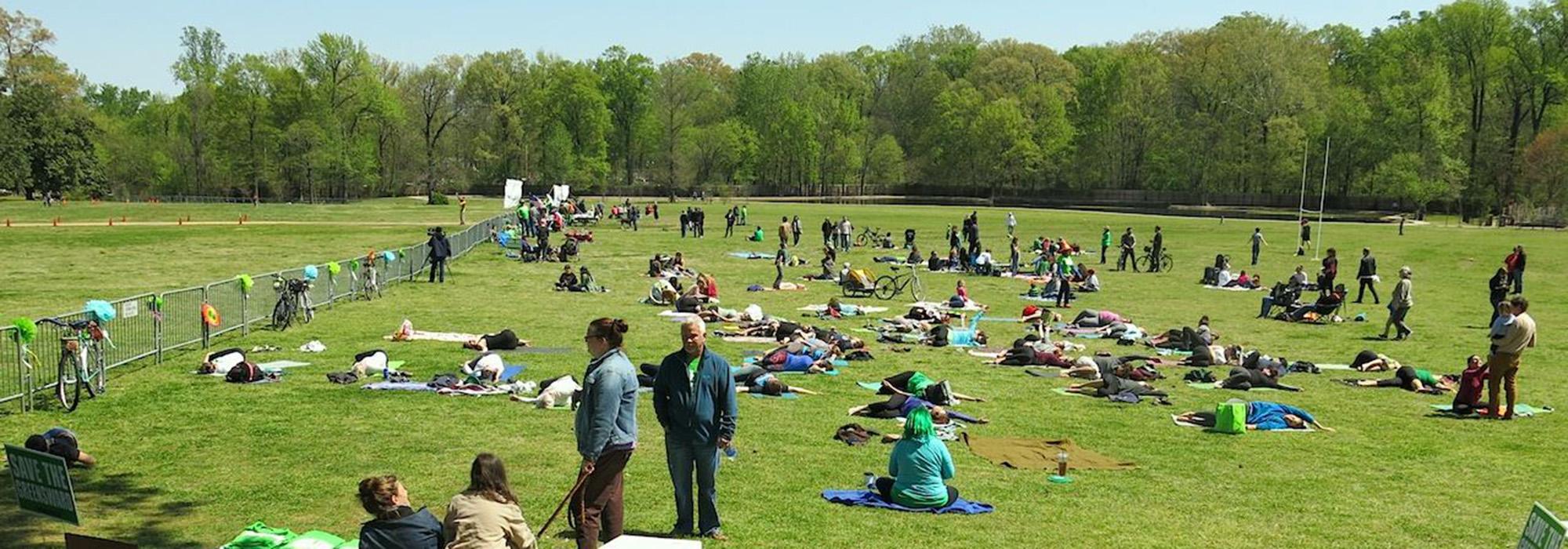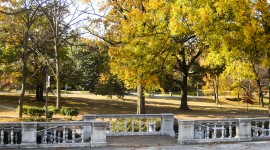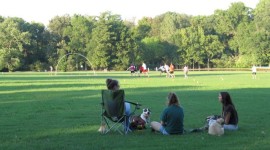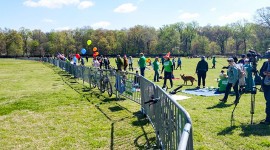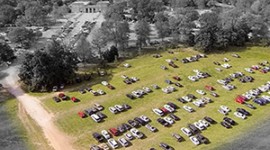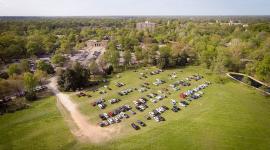Overton Park's Greensward at Risk
Considered the crown jewel of Memphis’ park system, Overton Park was designed in 1901 by George Kessler, consulting landscape architect to the Memphis Park Commission from 1901 to 1914. The 342-acre park was located at the eastern edge of the city limits at its inception. Along with providing a place of refuge, recreation and cultural pursuits, the park spurred residential growth and now sits well within the city limits, surrounded by urban development. Today, the integrity of this community cornerstone and National Register property is at risk due to stormwater management measures proposed by city engineers as well as ongoing expansion plans of institutions within the park, particularly those of the Memphis Zoo.

History
Considered the crown jewel of the Memphis park system, Overton Park was designed by landscape architect George Kessler in 1901. Kessler, of Kansas City, Missouri, was consulting landscape architect to the Memphis Park Commission from 1901 to 1914 during which time he oversaw the design of several Memphis parks as well as its parkway system. His designs for Overton Park, along with those for Riverside Park and the connecting Parkways, including North, South, and East Parkway, exemplify a systematic approach to city planning, an emerging area of professional practice for landscape architects in his time. Today, this system is an important extant example of early comprehensive municipal planning as well as a nationally-significant example of Kessler’s work.
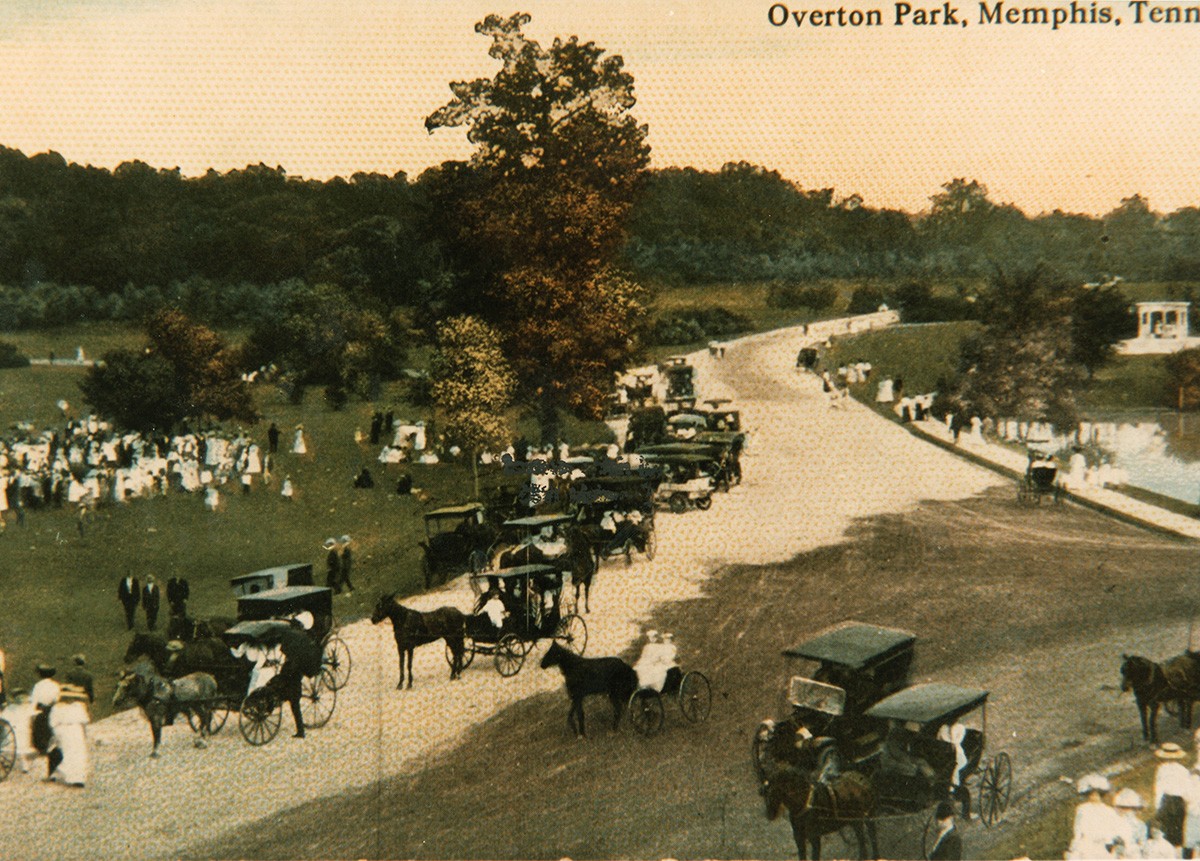
Overton Park is typical of large parks from the early 1900s. Generally picturesque in character, with curvilinear drives for carriage and horse travel and key features detailed in the Beaux-Arts style, these parks developed during the City Beautiful movement. At its inception, the 342-acre park was located at the eastern edge of the city limits. Cut from pastureland and forest, the topography and vegetation lent inherent natural beauty to the site. Kessler’s designs added plantings, ponds, rustic bridges, curvilinear drives and bridle paths, all of which typified the picturesque park designs of the era. A centrally located open lawn, known as the greensward, occupies the center of the park. It is the primary gathering place in the park, hosting a variety of leisure and recreation activities throughout the decades. Forming a backdrop to the greensward is the 175-acre old-growth forest, left intact as place of solitude and nature study.
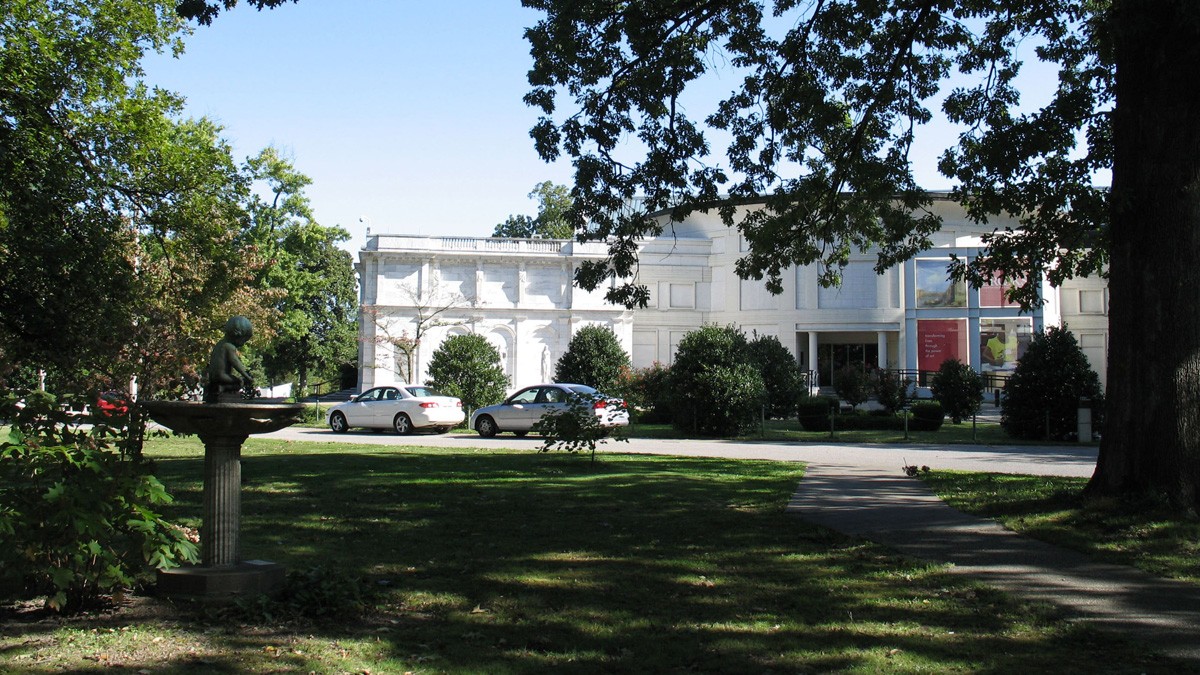
Overton became home to several recreational amenities and cultural institutions, including the region’s first public golf course (ca. 1906), Memphis Zoo (1906), Memphis Brooks Museum of Art (1916), and the Memphis College of Art (1959). The park continues to host special events, performances and concerts at the Shell, art festivals and runs. However, it is most beloved for the daily benefits it offers as an aesthetic amenity and as a place for playing ball, jogging, riding bicycles, picnicking, reading, and painting.
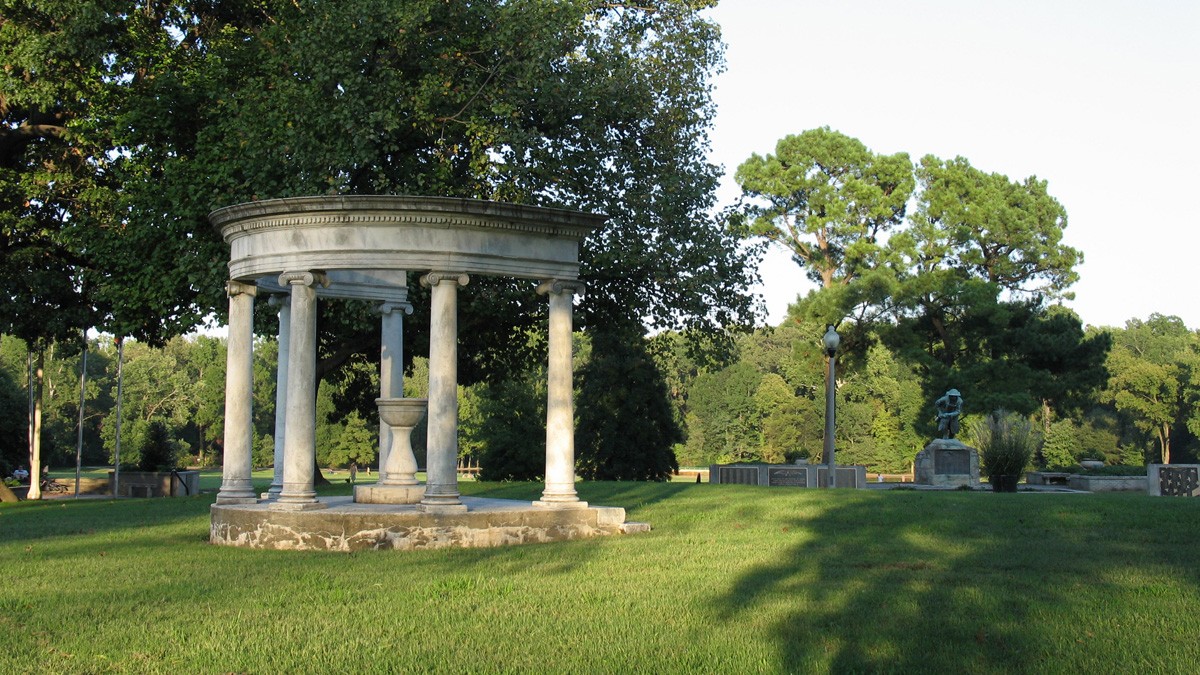
Overton Park has retained its scenic beauty throughout the years. However, the park has not been without threat. Supporters spent nearly two decades, starting in the 1950s, battling a proposed interstate highway that would have severely altered park access, use and appearance and dealt a blow to the forest ecosystem. Fortunately, the highway construction was halted and, in 1979, the Overton Park Historic District was listed in the National Register of Historic Places. Thus, the old forest and the greensward remained largely unaltered through most of the 20th century.
Threat
In the course of preparing the 1988 Overton Park Master Plan, agreements were reached with the institutions that occupy the park to guide their expansion in a reasonably unobtrusive manner.
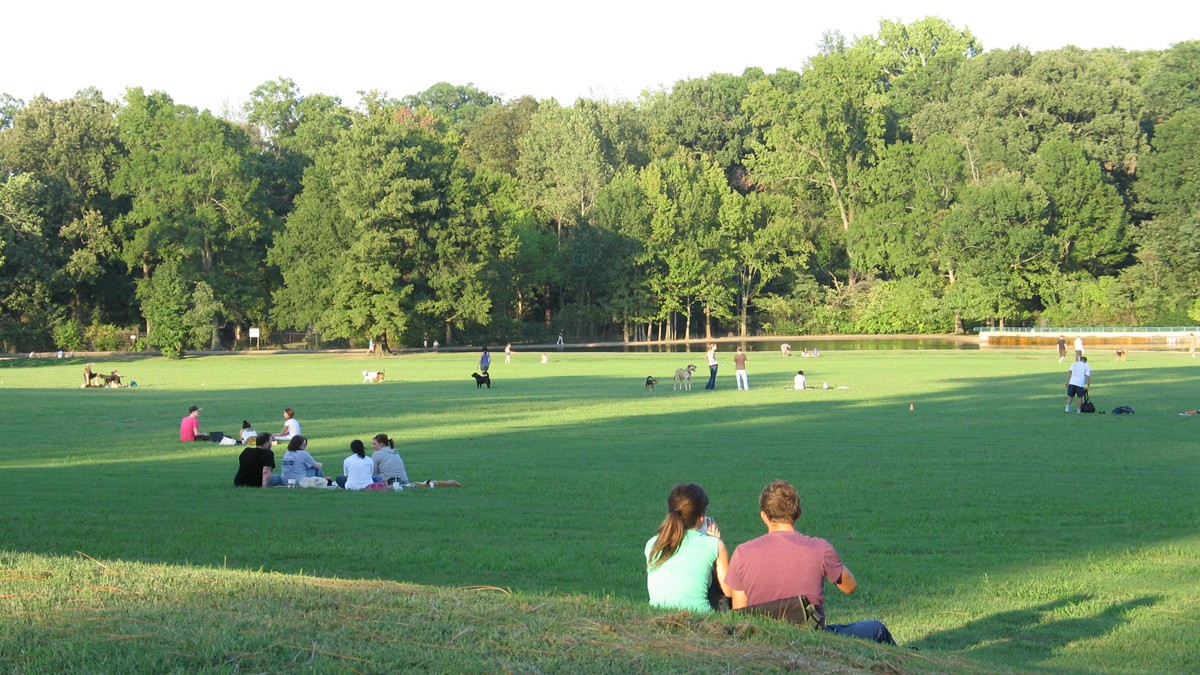
However, there remains an ongoing struggle with the Zoo’s continuing and regular use of the greensward for spill parking on days with heavy attendance and with the Zoo’s acquisition of forest acreage for incorporation as exotic animal exhibit space.
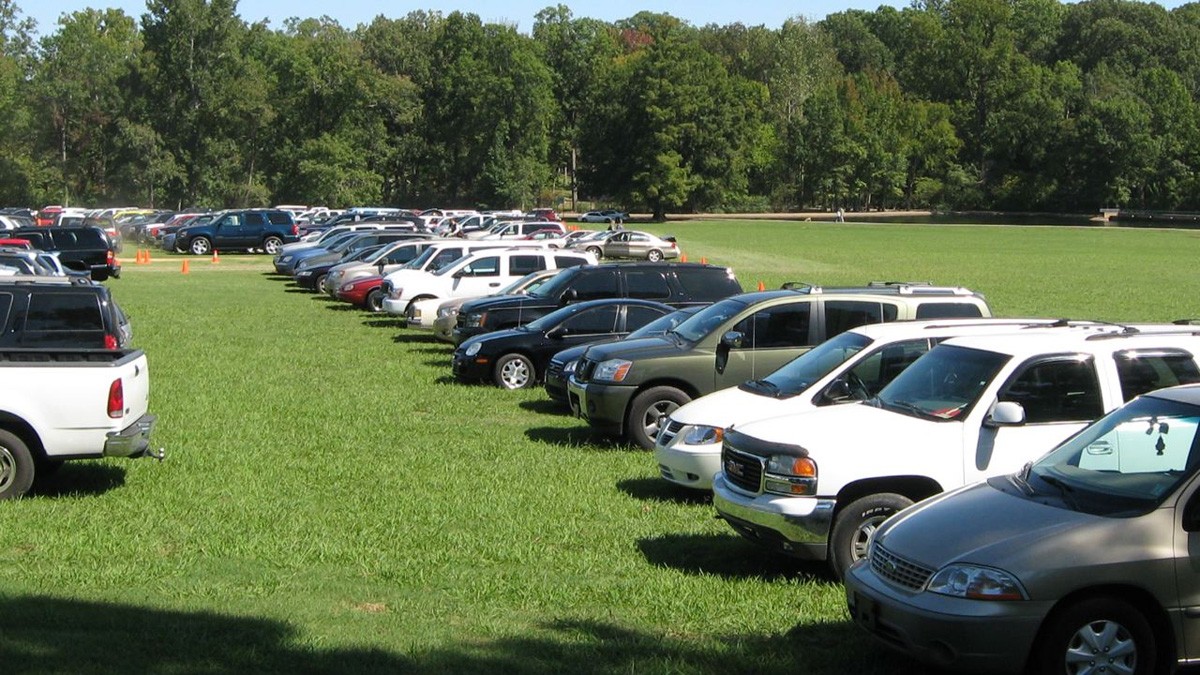
In early 2009, city engineers proposed a detention basin, sixteen feet deep, within and occupying most of the breadth of the greensward, to hold stormwater runoff collected from the larger surrounding urban watershed. This basin would have altered the original form of the park, significantly diminished the visual character, and limited recreational activities. Met with strong opposition, the engineers subsequently proposed an alternative to the basin, one that would impact the golf course topography and the historic stone bridges along Lick Creek. This plan proposes to modify the creek channel so that it would also allow floodwaters to spill into the forest at levels greater than reached historically. This raises questions as to how the different forest species would be affected.
Get Involved
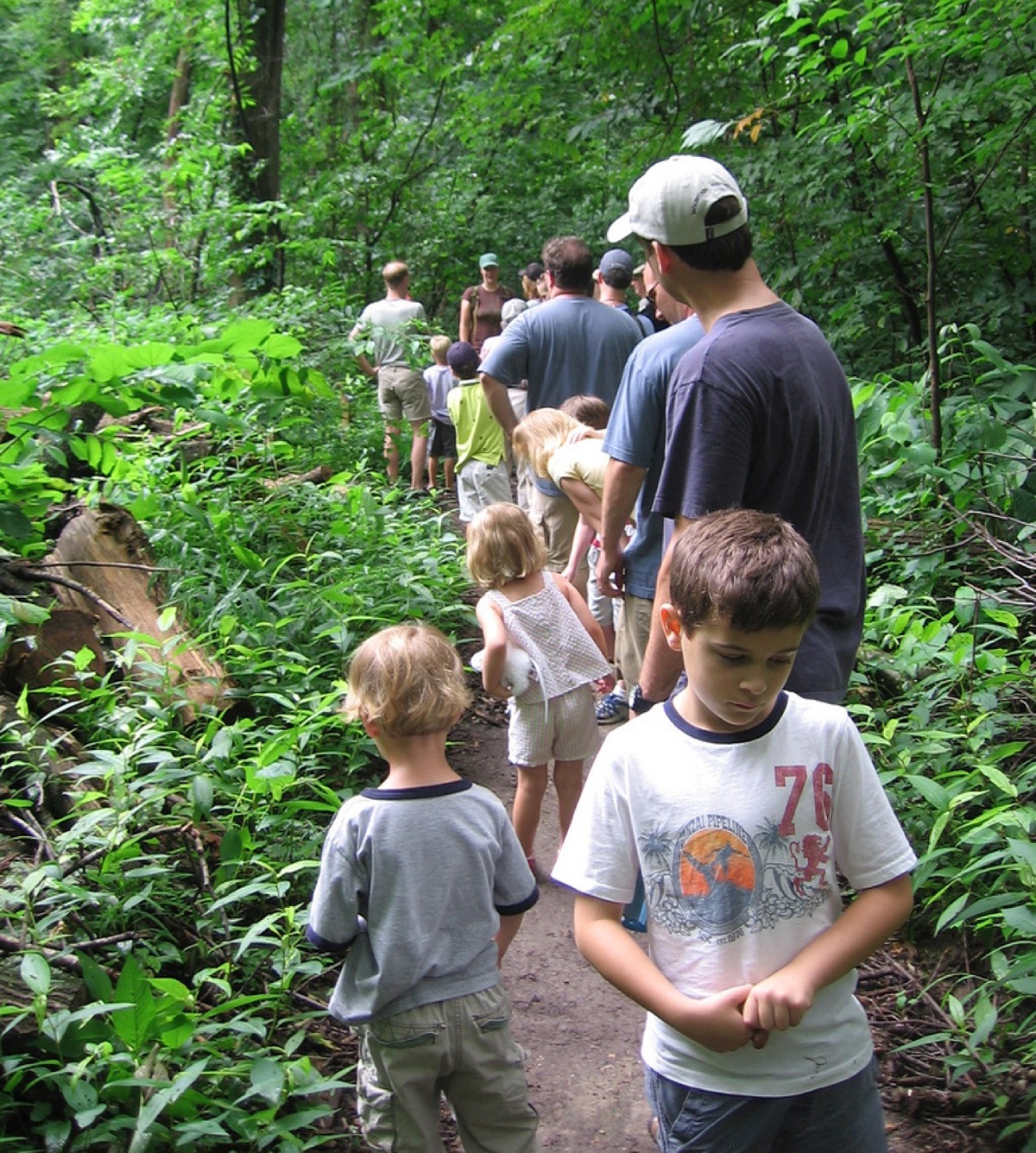
The local community can help bring attention to this historic resource by writing letters of support to officials. In addition to highlighting the importance of the park, and the value of the greensward and the forest, letters should urge exploration of alternative solutions for managing stormwater runoff city-wide and investigation of flood control measures that avoid negative impact within Overton Park.
It is also important that those outside the city, including landscape architects, historians, and other concerned citizens, make officials aware of the site’s national significance. Scholars can share the information they have on Kessler’s work and, in particular, Overton Park, using national publications as a means of raising the park’s profile.
Letters of support should be submitted to city and state officials, all of whom have a stake in the park’s long-term integrity. Letters should also be copied to Memphis City Engineers and the Director of the Division of Park Services so that all of those who care for the park are made aware of its significance both within and outside the community.
Learn More
Overton Park
Poplar Avenue at East Parkway
Memphis, TN 38104
Online Resources
Citizens to Preserve Overton Park
Park Friends Newsletter
All photos courtesy Lissa Thompson, except when noted



